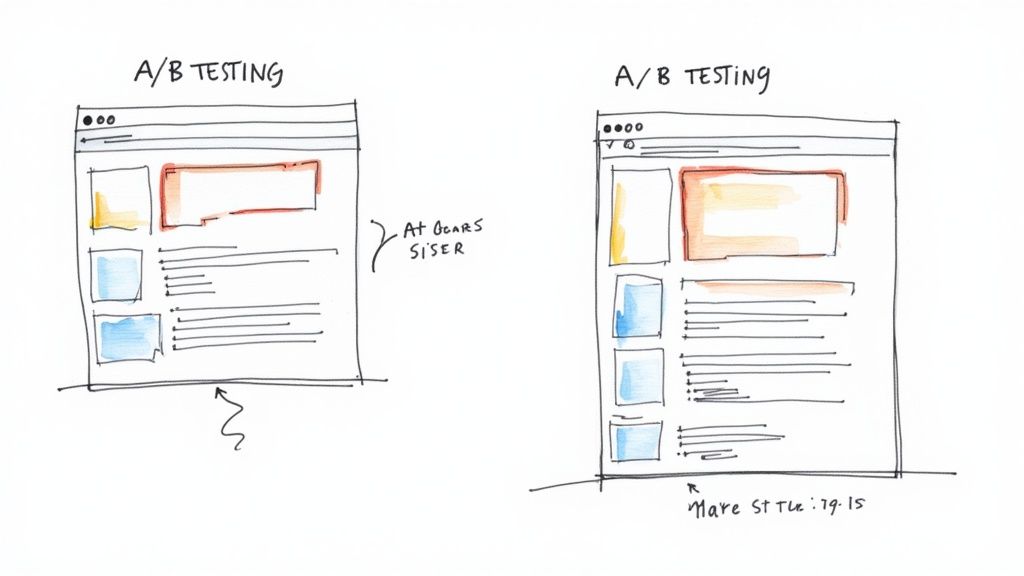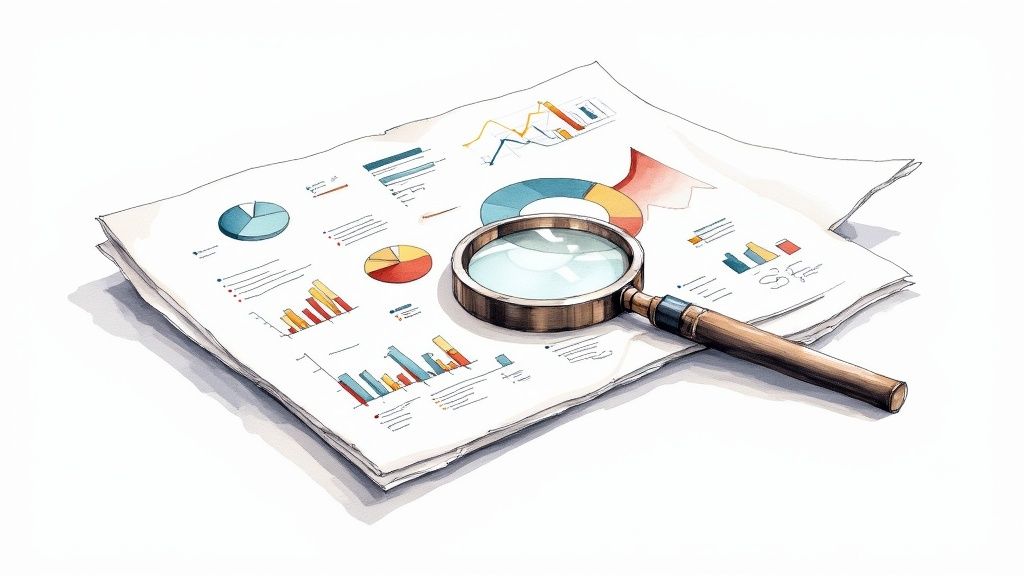Understanding Traffic Quality and Impact on Revenue Growth

When it comes to website traffic, quality matters more than quantity. While getting thousands of visitors sounds great, what really drives sales is attracting the right kind of visitors who are likely to become customers. Smart businesses focus on understanding where their visitors come from and how often they take desired actions like making purchases or signing up for emails.
Identifying High-Value Traffic Sources
The best way to boost sales is to focus on traffic sources that consistently deliver results. Direct traffic – people who type your website address directly or use bookmarks – often shows strong buying intent. These visitors usually know your brand already and are more likely to buy. Similarly, organic search traffic can be highly valuable when you rank for the right keywords. People finding you through relevant searches are actively looking for what you sell.
Why Direct Traffic Converts More Effectively
Direct traffic happens when people intentionally visit your site by typing in your web address or using a bookmark. This shows they already know and trust your brand. According to research by Ruler Analytics, direct traffic converts at 3.3% on average – much higher than other sources like email or social media. Some industries see even better results: healthcare and cosmetics both hit 5.3%, industrial reaches 5.0%, and legal achieves 4.2%. These numbers show why building direct traffic should be a priority.
Optimizing for Different Channels
Each traffic source needs its own approach. Social media visitors often respond well to eye-catching visuals and customer reviews, while search visitors want clear product details and specifications. The key is understanding what matters to different types of visitors. For example, if you're using MyAdForce for advertising, you'll want to create specific campaigns for each audience segment. By giving visitors what they're looking for based on where they came from, you can turn more of them into customers.
Mastering Strategic A/B Testing for Sustainable Growth

A/B testing is a practical way to find what actually works on your website. Rather than guessing what changes might boost sales, you can test different versions and let the data guide your decisions. The key is having a clear plan – knowing what to test, how to test it, and what the results really mean.
Hypothesis Formation and Test Prioritization
Start by making educated guesses based on real user data. For instance, if your analytics show people leaving during checkout, test whether a simpler process works better. Look at:
- Which pages have high bounce rates
- Where users spend the most time
- Common drop-off points
Choose tests that could make the biggest difference to your bottom line. Focus on high-traffic pages and critical conversion points first.
Analyzing Results and Avoiding Pitfalls
Don't just pick the version with better numbers – make sure the difference is statistically meaningful. Watch out for outside factors that could skew your results, like seasonal changes or ongoing promotions.
The data shows why testing matters: A/B testing landing pages can boost conversions by up to 12%. When Bing tested different ad headlines, their revenue jumped 12%. But success isn't guaranteed – only one in seven tests produce winning results. That's why having a solid testing strategy is crucial.
Scaling and Maintaining Quality in Your Testing Program
As you grow, you'll need systems to run multiple tests while maintaining quality. Tools like MyAdForce can help manage testing across platforms like Meta and Instagram. By automating some parts of your campaigns, you free up time to focus on analysis and strategy.
Make testing a regular part of how your team works. When you consistently run thoughtful tests and act on the results, you create a feedback loop of steady improvements. Combined with the right tools, this builds lasting growth through better conversion rates.
Building High-Performance Websites That Convert

A successful website combines great design with proven conversion tactics. Getting visitors to take action – whether that's making a purchase, signing up, or requesting info – requires technical excellence and user-focused design. Let's look at the key elements that drive results.
The Need for Speed
Your website's loading speed directly impacts sales and signups. When pages load slowly, visitors get frustrated and leave before converting. The fix? Focus on technical optimization:
- Minimize HTTP requests
- Compress images properly
- Enable browser caching
- Remove unnecessary scripts and plugins
The numbers speak for themselves. Research shows that improving page load speed by just one second can boost conversions by 7%. Get your site loading in under two seconds and you could see up to a 15% jump in conversion rates. For more data, check out these conversion rate optimization statistics from Shopify.
Mobile-First Approach
Most web traffic now comes from phones and tablets. Your website must work flawlessly on mobile devices if you want to capture these visitors. Key mobile optimization tips:
- Design for touch interaction first
- Make buttons and forms finger-friendly
- Keep navigation simple and clear
- Format content for small screens
- Test thoroughly on multiple devices
Streamlining the User Journey
Every step from landing page to conversion should feel effortless. Remove friction by:
- Using clear, action-focused buttons
- Simplifying forms and checkout
- Providing helpful support options
- Testing and optimizing each step
For online stores using Shopify or WooCommerce, tools like MyAdForce can help manage campaigns across platforms while you focus on improving the user experience. The results are worth it – FSAstore.com saw a 53.8% increase in average order value after streamlining their conversion path.
Crafting Compelling Calls-to-Action That Drive Results

A well-designed call-to-action (CTA) can make the difference between a visitor leaving your site or becoming a customer. Think of your CTA as a friendly guide that helps interested visitors take the next step. When done right, CTAs boost conversion rates significantly.
The Psychology of Effective CTAs
The best CTAs tap into what motivates your visitors and give them a clear reason to act now. Skip generic phrases like "Click Here" – instead, speak directly to what your visitors want. For example, "Start Your Free Trial Today" works better than just "Sign Up" because it highlights immediate value and encourages quick action.
Strategic Button Placement and Messaging
Where and how you display your CTA button matters as much as what it says. Make your button stand out visually while keeping it easy to spot and click. Choose colors that contrast with your page design to draw attention. Size matters too – buttons should be large enough for easy tapping on mobile screens. Keep button text short and action-focused to make the next step crystal clear.
Personalizing CTAs for Increased Engagement
Different visitors respond to different messages. Someone visiting for the first time might prefer "Learn More," while a returning visitor could be ready for "Get a Quote." Tools like MyAdForce help you show the right CTA to each visitor based on their behavior. Try different versions for new vs returning visitors, different products, or stages in the buying journey.
Testing and Optimization
Regular A/B testing helps you find what works best with your audience. Test button colors, sizes, locations, and messages one at a time. Track your results carefully and use that data to guide improvements. Even small tweaks to your CTAs can lead to big gains in conversion rates. The key is to keep testing, measuring, and refining based on real user behavior.
Turn Social Proof Into Higher Conversions
Let's start with a simple truth: people trust what other people say about your business. When choosing between two products, customers naturally gravitate toward the one with positive reviews and real customer feedback. That's the essence of social proof, and it can make a huge difference in your sales.
Real Trust That Converts
Skip the fake reviews – customers can spot them from a mile away. Focus on getting honest feedback from your actual happy customers. Research shows that authentic customer testimonials can boost your conversion rates by 34%. Make it easy for customers to leave reviews, and consider offering small incentives like discount codes for their next purchase.
Set Up Smart Review Systems
Put your review system where customers will actually use it – right on your product pages. When using platforms like Shopify or WooCommerce, make reviews a central part of your product displays. Tools like MyAdForce can help manage your social media campaigns on Facebook and Instagram, giving you more time to focus on gathering quality customer feedback.
Create Stories That Connect
Don't just ask "How was it?" Ask questions that get specific answers:
- What problem were you trying to solve?
- How did our product help?
- What specific results did you see?
These detailed responses create stories that potential customers can relate to. For instance, instead of "Great product!", aim for: "I was struggling to keep track of my team's tasks. After using this tool, our project completion rate improved by 25%."
Track What Works
Keep an eye on how different types of social proof affect your sales. Run simple tests to answer key questions:
- Do customer reviews work better than expert testimonials?
- Where should you place social proof on your pages?
- Which review formats drive the most sales?
Test different approaches and track your results. Use the data to keep improving how you show social proof on your site. The goal is simple: find what convinces your specific audience and do more of that.
Analytics and Measurement: Building a Data-Driven Optimization Program
Think of analytics as a spotlight that illuminates what's actually happening on your website. Getting clear performance data helps you make smart decisions about improving your conversion rates. Let's explore how successful businesses use data to find opportunities and get better results.
Setting Up Advanced Tracking Systems
When you track visitor behavior, you get a clear picture of how people interact with your website. Modern tracking tools let you see the full customer journey – from their first click through to a completed purchase.
Key metrics to monitor include:
- Pageviews – Which content draws the most visits?
- Time on page – How long do visitors stay?
- Click rates – Are your calls-to-action working?
- Scroll depth – Do people see important content below the fold?
Identifying Critical Drop-Off Points
Finding where visitors leave your site is just as important as seeing where they go. A sudden drop in engagement often points to a specific problem – like a confusing form or slow page load.
For example, if many shoppers abandon their carts on the shipping page, that suggests an issue with your shipping options or costs. Finding these friction points helps you make targeted fixes.
Using Behavioral Data to Guide Improvements
Data only becomes valuable when you act on it. After finding key metrics and drop-off points, use those insights to guide your optimization work. For instance, if mobile users convert at much lower rates than desktop users, that clearly shows you need to improve the mobile experience – perhaps by speeding up load times or simplifying checkout.
Building Clear Dashboards and Reports
Good data visualization helps everyone understand what's happening. Well-designed dashboards show your most important metrics at a glance, making it easy to spot trends. Your reports should:
- Focus on metrics that directly impact conversions
- Clearly show problem areas
- Suggest specific improvements
- Help prioritize optimization efforts
To boost conversion rates effectively, you need both solid data analysis and a clear optimization plan. Start optimizing your ad campaigns with MyAdForce today!

Laisser un commentaire